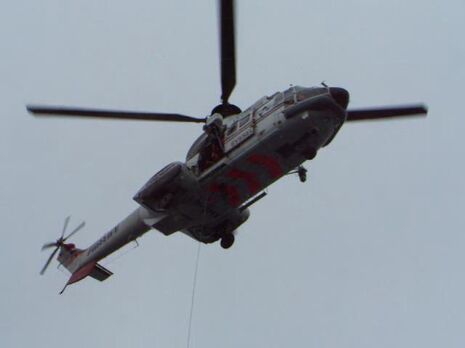How Long is This?
A day of performances responding to the work of playwright Will Stuart

Last Friday the 27th of April, the English Faculty played host to a day of performances, How Long is This?, responding to the work of Will Stuart, Playwright in Residence at the Judith E Wilson drama studio. Stuart, who was described by Jeremy Prynne as “a fertile writer”, was himself part of many of the day’s events. When he was not involved, he was always conspicuously visible in the audience, enjoying the eclectic mixture of films, schizophrenic monologues, discussions and presentations stimulated by his writing.
Hosted by Ian Heames of the English Faculty, the performances were interested in and inclusive of their audience members, who were encouraged to fill a four foot inflatable dinosaur, and help clean up when Kat Griffiths finished spitting saliva diluted coffee powder onto the floor during her piece, A performed love poem. Heames’ other important role was as pilot to the two remote control helicopters that flew around the studio as Stuart spoke about how his work was an attempt to get at “the thing in the sky. That thing in the sky that is something important, maybe the truth or something”.
It would be futile to try and wholistically describe all the different parts of the day, which mimicked Stuart’s fragmentation-compilation technique that dislikes summary. Yet How Long is This? was an important celebration of the work of a growing writer, so here is at least something of it:
Transfigurations
The evening performance of Will Stuart’s Transfigurations began ceremoniously with plastic cups of prosecco for the audience that had grown in anticipation of the concluding item on the day’s schedule. The play opened with three actors: Evi Heinz (playing Harold Pinter) standing centre stage on a box, Jeremy Hardingham standing upstage holding a sign reading “Aroused”, and James Macnamara racing back and forth punctuating Heinz’s lines with dire warnings of apocalypse. The challenge this opening presented to the audience was indicative of the play’s attention to processes of interpretation and the importance of questioning those processes.
Its title, Transfigurations, describes the invocation and reconfiguration of a multitude of texts and sources that together constitute the play’s script. This is a veritable collage of court transcripts, song lyrics and advertising copy as well as a myriad of other textual sources both written and sung. As the play proceeded, it cultivated an atmosphere of ambiguity and anxiety which often tipped over into comedy either through caprice or the wild juxtaposition of text and tone. Three actors are credited in the programme, however a description of the play would be incomplete without mentioning Heames on sound to the right of the stage, and Stuart, observing events from the top left-hand corner. Both soundman and playwright were made part of the scene by Macnamara’s long strides back and forth to where they both were located. By framing the performance in this way, Stuart chose not to establish and clearly define the space between actors, audience and playwright thus implicating all bodies in the action of the play.
The source texts that constitute the script of Transfigurations are each recognisable either by their form or content, several being derived from recognisable pop music and television advertisements. Yet even for those of us familiar with the pouring chocolate of Lindor and JLS’ predilection for the “kinda girl boys read about in ... glossy magazines”, this amalgamation of texts does not constitute a whole greater than the sum of its parts. Despite the fluidity of boundaries in the physical performance of the play, there is little connecting these constitutive texts. Transfigurations is an exposition, and its most compelling characteristic is its very refusal to develop the range of themes it proposes.
 News / English students fury at note sheet ban for exams21 November 2025
News / English students fury at note sheet ban for exams21 November 2025 Lifestyle / Notes from the end of the world20 November 2025
Lifestyle / Notes from the end of the world20 November 2025 News / Protesters call on university staff to support strike action21 November 2025
News / Protesters call on university staff to support strike action21 November 2025 Comment / Confidence isn’t earned, it’s bought 21 November 2025
Comment / Confidence isn’t earned, it’s bought 21 November 2025 News / Trinity master to step down17 November 2025
News / Trinity master to step down17 November 2025









